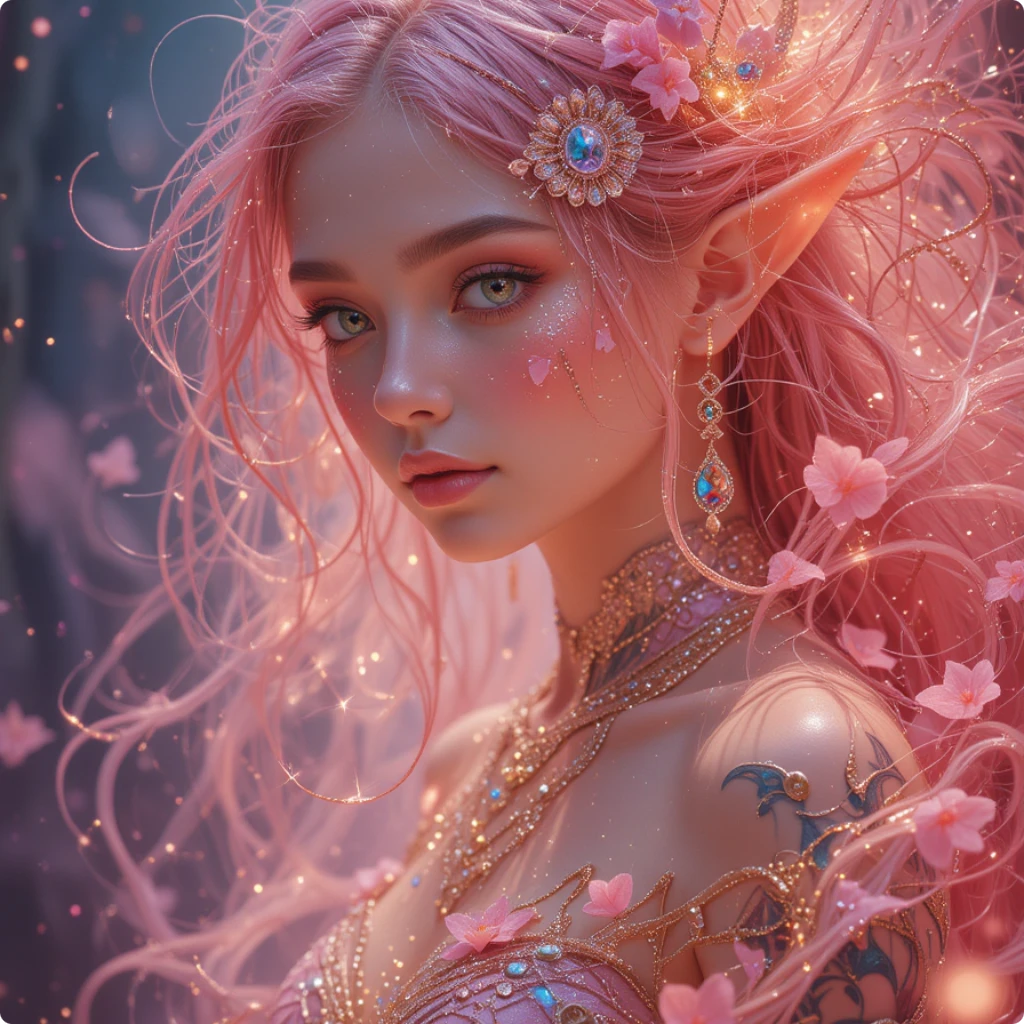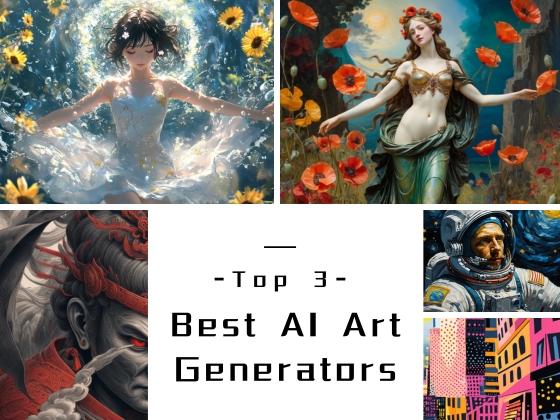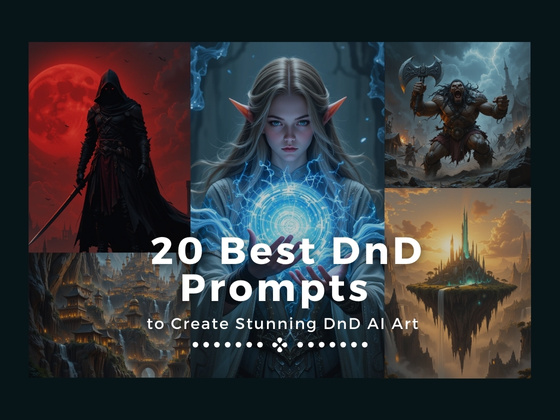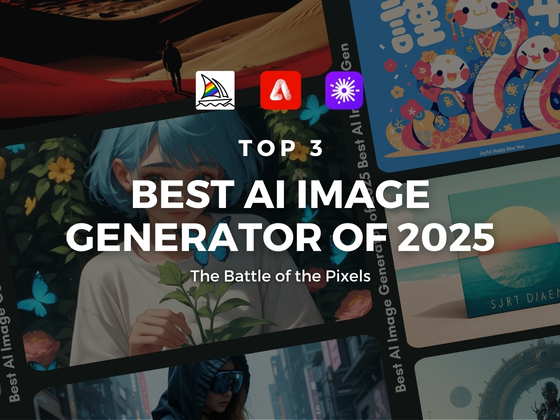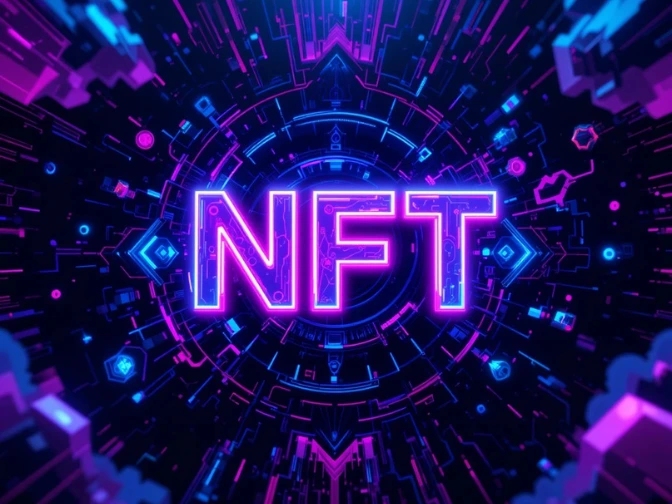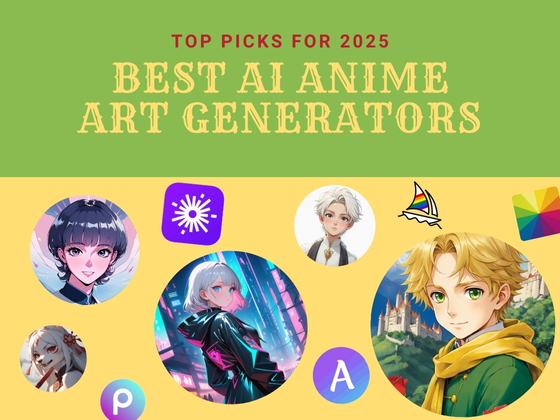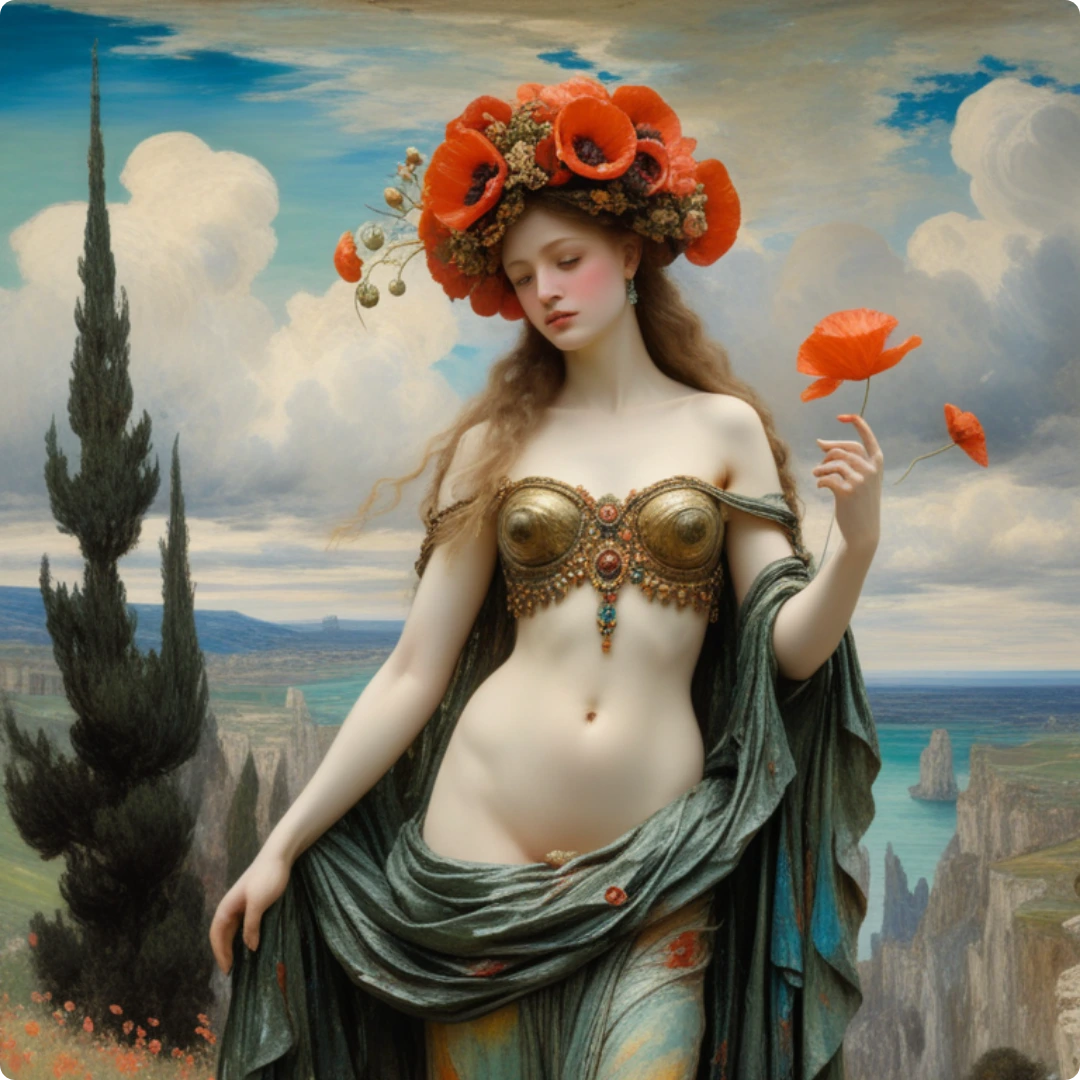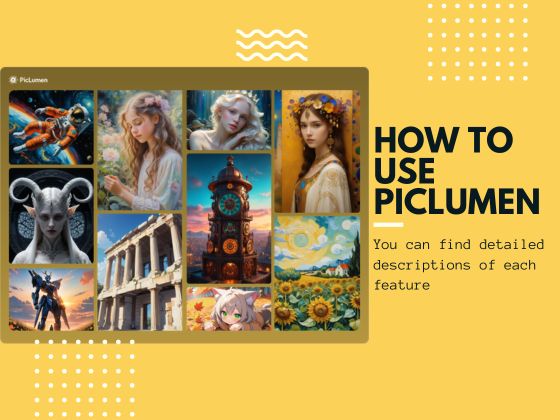Advanced generative AI algorithms make it possible to transform ordinary texts into visually breathtaking works of art. With this use of artificial intelligence, now even an artist or a casual hobbyist can compose complex, engaging images through just a few words.
Useful AI art prompts require a mix of creativity and technical know-how – knowing how AI art generators work, their strengths, and their limitations in processing information. This knowledge will guide you to craft a prompt that will enable your ideas to express themselves in beautiful visuals.
In this article, we will be discussing how to create text to image prompts for AI art, including best practices, techniques, and tips to enable you to elicit the greatest benefit from your AI art generator. Also, you’ll find the best free AI art generator tool.
Understanding AI Art Generators
AI art generators use complex algorithms and machine learning models to translate text to image prompts into images. The generators have been trained on a large capacity of image and text datasets, thus giving them insight, interpreting, and executing instructions in the form of text. When you input any textual prompt, the AI analyzes the keywords and their context to create a corresponding image that attempts to explain what you have written. Output quality is predominantly determined by text prompt quality; therefore, how to construct effective prompts that drive results becomes very important.
The Importance of Prompt Engineering in AI Art Generation
Basically, text prompts are at the root of any AI art generation tool. This is where the AI gets fed with the initiating signal for the creation of visual content. How good the quality and details you want to convey through the text prompt may affect the output image quality. A good prompt will yield a detailed image, but a vague or bad one may result in poor output.
The best prompt engineering technique purifies creativity into precise words, ensuring that AI accurately understands your vision and generates images that closely match your expectations, resulting in a final output that is compelling and visually pleasing.
Tips for Creating Concise and Specific Text to Image Prompts
There are a few tips, techniques, and best practices to create specific and concise prompts that can ease your journey, help you achieve stunning results more quickly, and set you on the path to success.
1. Decode the AI Language: To get the most out of your AI art prompts, it’s crucial to understand what your AI apps are capable of. AI is trained on vast datasets of images and learns to mimic styles from that training data. Use similar language to create a prompt, like describing color palettes and artistic styles, to get the best results.
2. Understand the Components: Write natural language prompts, using plain text, and include lists of phrases and keywords separated by commas for simplicity. Describe what you want, like a landscape with reflective water and fall foliage, and include style keywords like “gothic portrait” or “minimalist style”.
3. Write Specific Art Styles: Describe the style you want, like Surrealism or Cubism, and use artists’ names as keywords to request specific styles. This helps the AI generator draw from the best inspiration for your desired output.
4. Experimentation is Key: Try different descriptive texts and see how they impact the result. For example, test “sunrise over a lake” versus “sunrise over a lake, birds flying overhead, small ripples in the water, rainy day.” See how details can create a completely different scene.
5. Refine Your Prompts: Prompt engineering is like fine-tuning a recipe. Experiment with different descriptors and AI generator options to get closer to your vision. For instance, you can modify the image style (“oil painting”) or add negative prompts (“no trees”) to refine the output.
6. Build Your Inspiration Library: Curate a digital library of AI art that you love, along with the prompts used to create it. This can serve as a source of inspiration and help you track your own progress in crafting effective and meaningful prompts.
How to Generate AI Art through Text Prompts?
Now that you’ve learned prompt engineering techniques and best practices for crafting meaningful prompts that yield mind-blowing results, it’s time to put your skills to the test! To generate AI Art through text to image prompts, you’ll need the best top-notch AI art generator. One exceptional tool that excels at generating AI art from text prompts is PicLumen.
Use PicLumen to Generate AI Art
PicLumen is the best AI art generator and comes with comprehensive features in its package. It offers a user-friendly interface and a focus on prompt-driven art creation. Image enhancement, creating line art, and photorealistic styles—PicLumen’s various features make it a great solution both for artists and designers.
No artistic skills are required whatsoever; just write down what is in your mind, and PicLumen will work wonders. One-click image enhancement, real-time line art, and background removal make it a complete AI art playground.
PicLumen creates multiple variations per prompt so that you can settle on one that really makes your idea stand out.
Key Features:
- One-click image enhancement for boosting resolution and sharpness.
- Instant line art generation from text prompts.
- Photorealistic image creation with detailed clarity.
- Background removal feature for streamlined editing.
Here’s how to use PicLumen to generate AI art:
Step 1. Go to PicLumen’s official site.
Step 2. Sign-up or login to your account.
Step 3. Write a specific prompt in the prompt box. You can also use the “Negative prompt” feature to specify elements you want to exclude from the image.
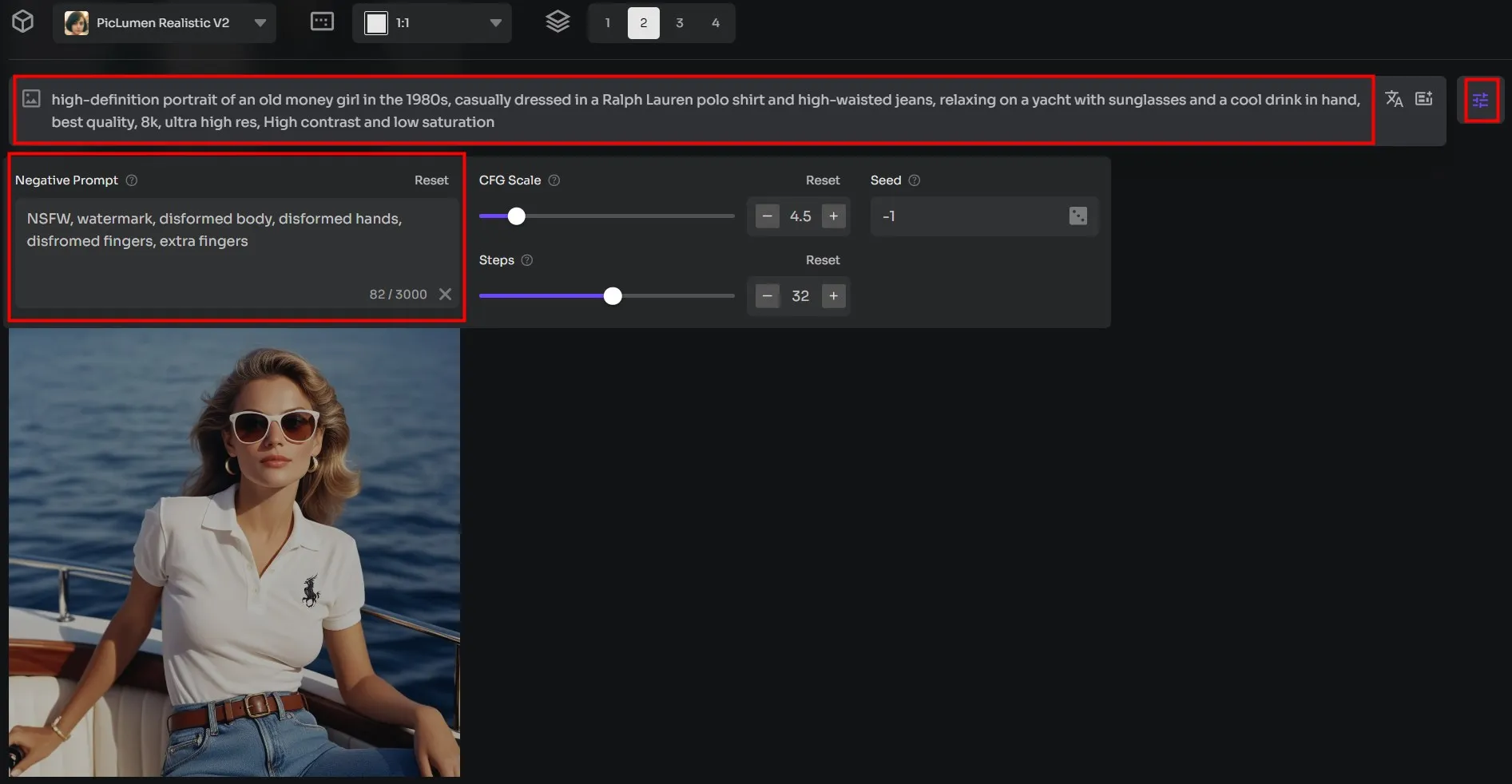
Step 4. Customize the settings from “General Parameters” and “Advanced Parameters” options to adjust factors like style, resolution, and more.
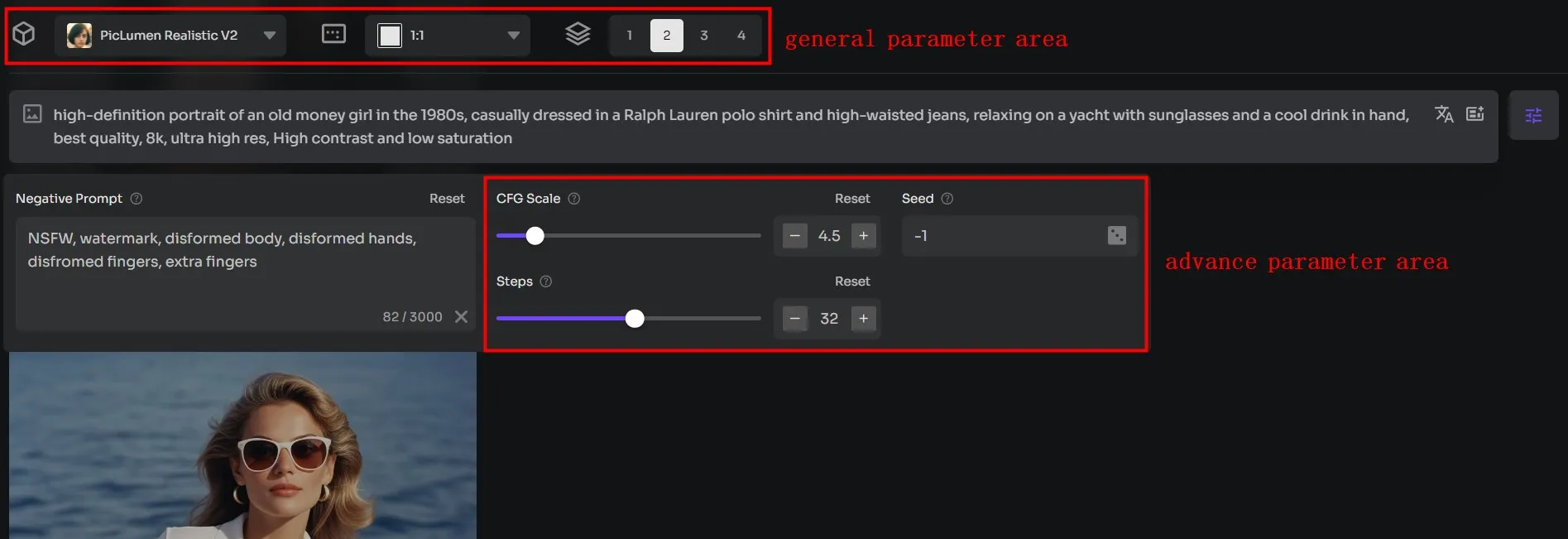
Step 5. Click the “Generate” button and wait a few moments.

Step 6. Review your generated image to ensure it meets your expectations.
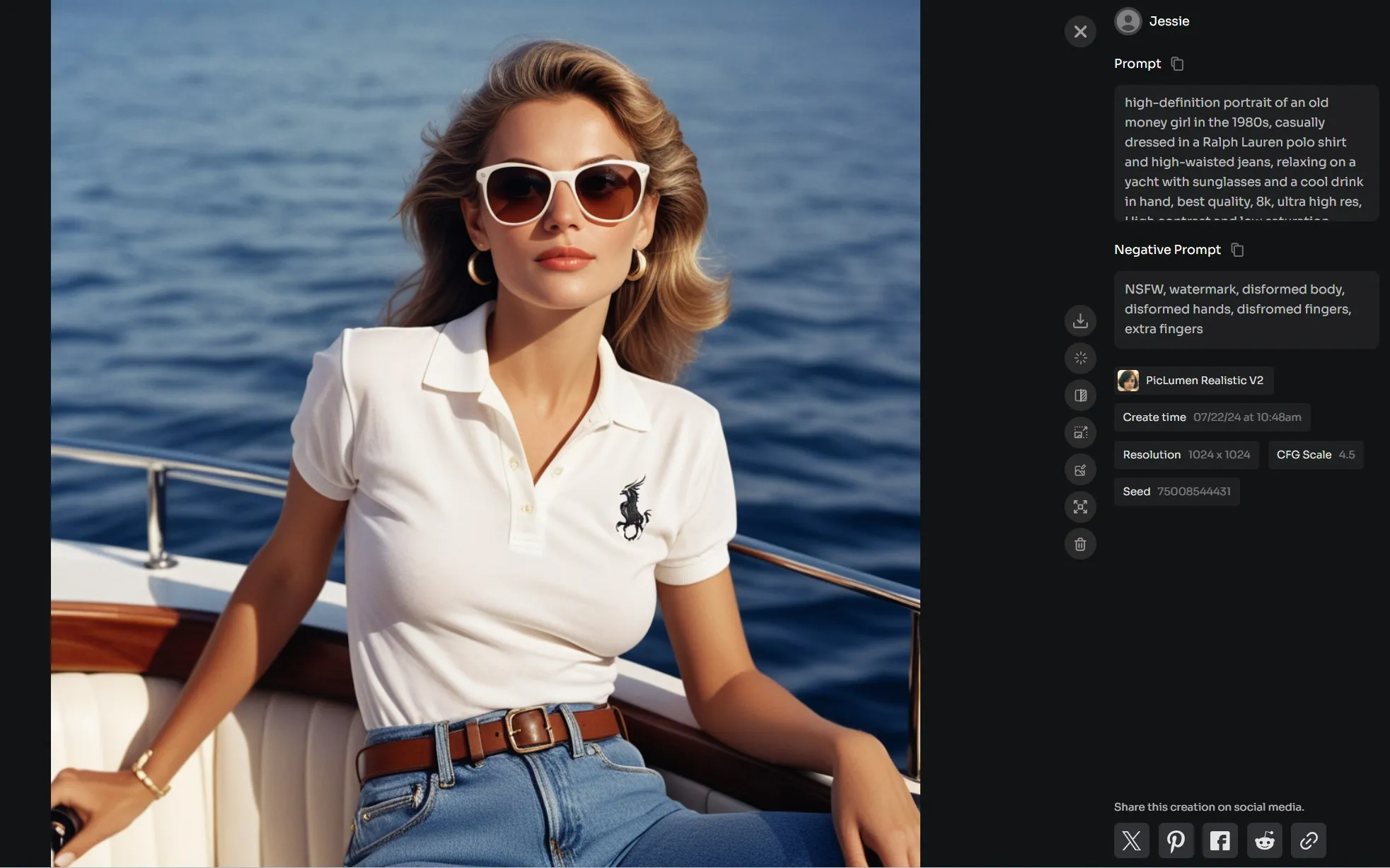
Advantages of PicLumen:
- User-Friendly Interface
- Free to Use
- Versatile Artistic Styles
- High-Quality Output
- Instant Enhancements
- Detailed Line Art Creation
- Customizable Parameters
These advantages make PicLumen a robust and versatile tool for anyone looking to create stunning AI-generated art effortlessly.
Examples of Text Prompts for AI Art Generator
Here are some examples of effective text prompts that demonstrate best practices in prompt engineering:
Example 1: “A serene lakeside landscape at sunrise, with mist rising from the water, surrounded by lush green forests, and a few birds flying overhead.”
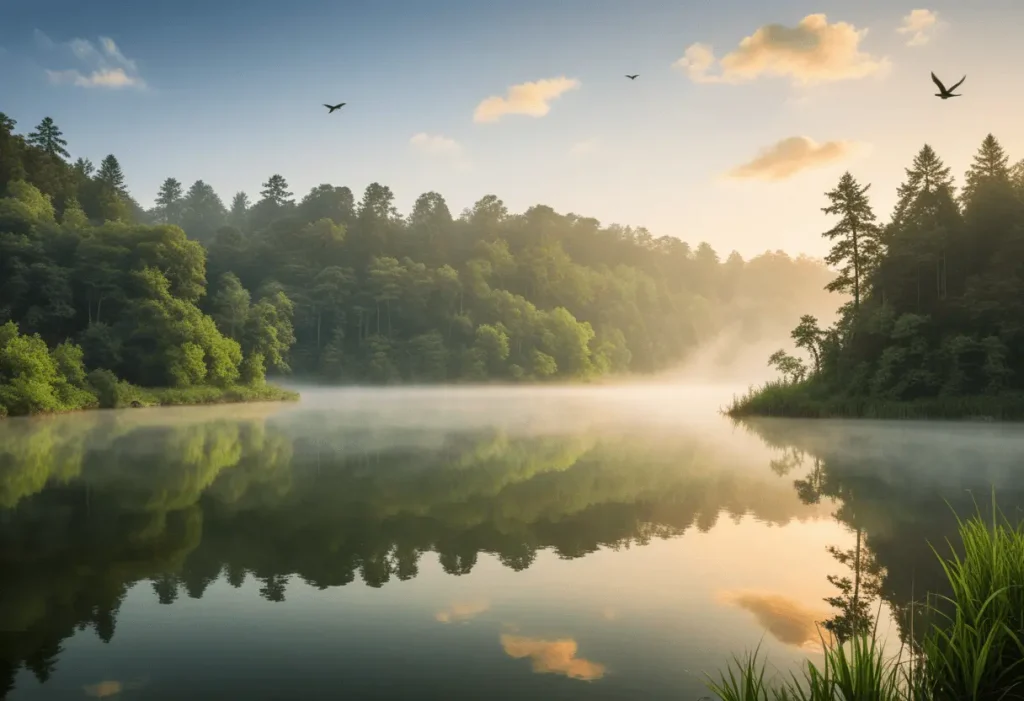
Example 2: “Portrait of a young woman in a gothic style, wearing a Victorian-era dress, standing in front of an ancient castle with dark clouds looming in the background.”
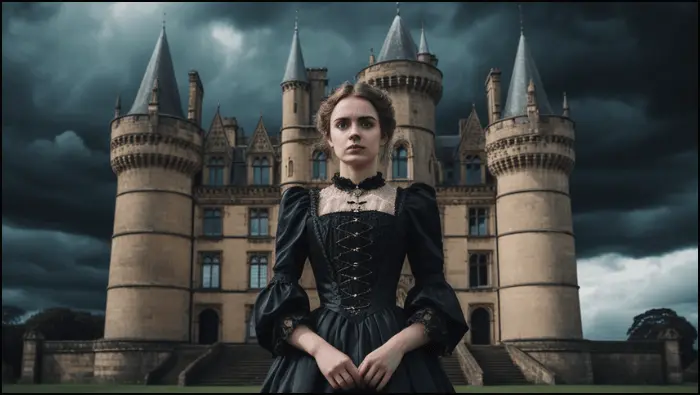
Example 3: “A futuristic cityscape at night, featuring neon-lit skyscrapers, flying cars, and a bustling street market with diverse crowds.”
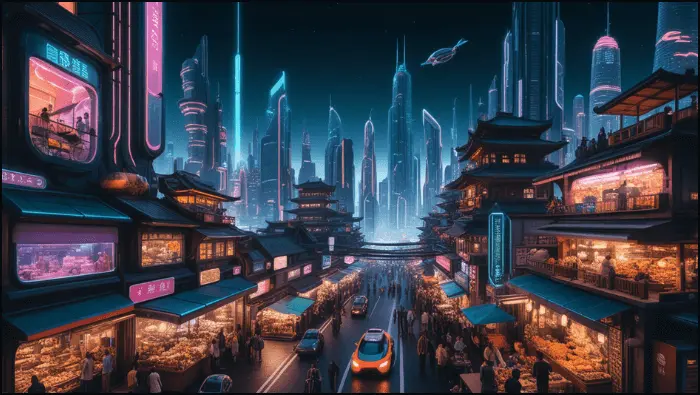
These examples are just the starting point. Feel free to experiment and craft your own unique prompts that reflect your personal style and creative vision. With a little practice, you can write highly effective prompts that bring your most imaginative ideas to life!
Conclusion
Effective text prompts can transform even the most fleeting ideas into breathtaking visuals. Whether you’re an artist or a hobbyist seeking to express your creativity in a new and innovative way, learning the art of crafting effective prompts is essential.
Don’t be afraid to experiment with prompts and explore the various styles and effects that each produces with AI generators like PicLumen. With practice, you’ll develop the skills to write prompts that yield unique and captivating works of art, bringing your creative vision to life.
FAQs
Do you have more queries? Check out the FAQs below!
Effective text prompts for AI art should be specific, concise, and clear, providing details about the desired image, including subject, style, mood, and composition. References to artistic styles or movements can also be helpful.
PicLumen offers a free AI art generator. You can use its features and generate stunning artwork for free of cost.
The use of AI-generated art for commercial purposes depends on the terms of service of the specific AI art generator you are using. Many platforms allow commercial use, but it’s essential to read and understand their policies.
Improve AI-generated art by refining text prompts and understanding the tool’s capabilities. Use detailed and specific prompts, high-resolution settings, and experiment with styles and advanced parameters to enhance the final output.
